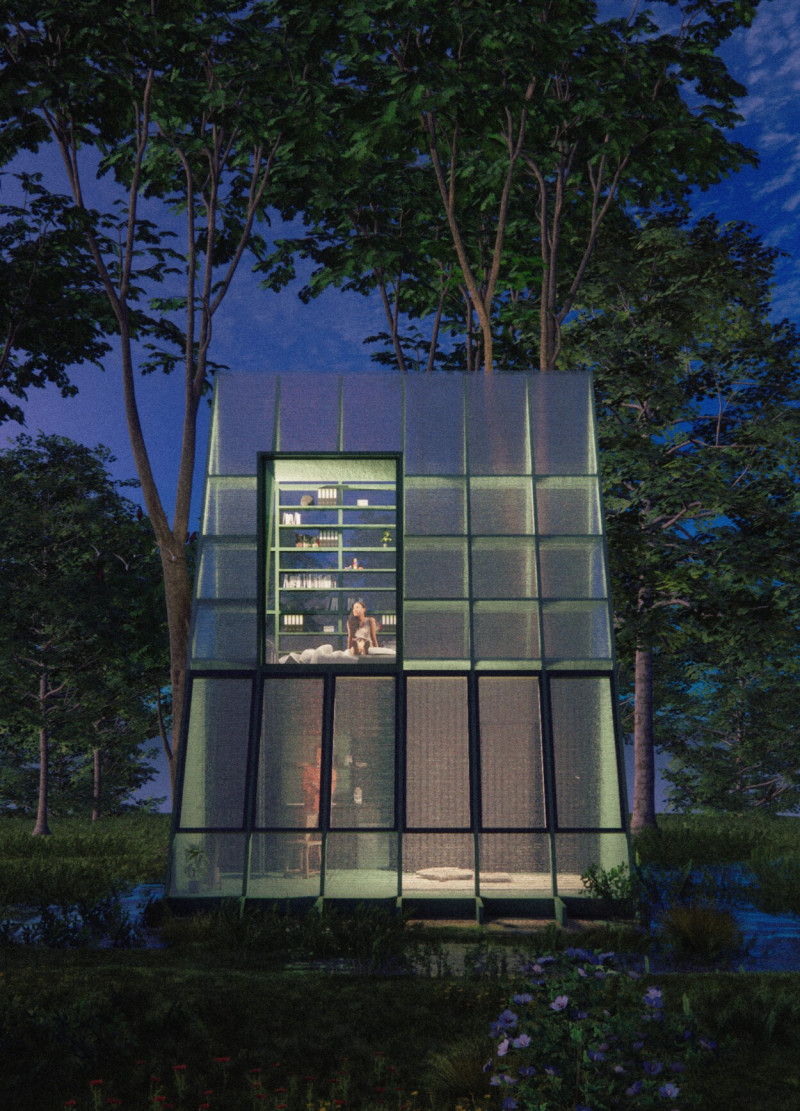5 key facts about this project
At its core, the project is designed to serve a multifaceted purpose, incorporating residential, commercial, and communal spaces. This multipurpose nature promotes interaction among different user groups, fostering a sense of community. The design encapsulates the essence of livability, with carefully considered layouts that facilitate both private retreats and communal gatherings. The integration of various functions within a single structure allows residents and visitors alike to engage with their environment in meaningful ways.
The architectural design employs a range of materials that not only serve structural purposes but also elevate the aesthetic quality of the project. Predominant materials include concrete, glass, wood, and steel, each chosen for their durability and visual qualities. Concrete provides a robust framework while allowing for expansive open spaces. Large glass panels are strategically placed throughout the facade, inviting natural light into the interiors and creating a seamless connection between indoor and outdoor environments. Wood elements are introduced to add warmth and texture, creating a welcoming atmosphere that encourages social interaction.
A unique aspect of this project lies in its approach to sustainability. The design incorporates green roofs and living walls that not only enhance biodiversity but also help regulate building temperatures, contributing to energy efficiency. Rainwater harvesting systems have been integrated, ensuring that the building minimizes its ecological footprint. The architectural solutions put forth exhibit a conscious effort towards environmental stewardship, which is increasingly relevant in modern architectural discourse.
Attention to detail in the design is evident through various features such as shaded outdoor spaces, which encourage outdoor activities even in warmer months. The inclusion of communal gardens serves not only as green spaces for relaxation but also as productive areas that foster community gardening initiatives among residents. These design elements cater to both personal well-being and collective participation, highlighting the project’s dual commitment to individual and community needs.
Moreover, the project exemplifies a modern interpretation of local architectural vernacular through its form and facades, drawing inspiration from surrounding structures yet introducing contemporary lines and elements. This dialogue between traditional and modern styles enriches the architectural narrative, allowing the new building to harmoniously coexist with its environment.
In exploring the architectural plans, sections, and overall design strategies implemented in this project, one can gain deeper insights into how contemporary architecture can effectively respond to the evolving demands of urban living. The careful balance of aesthetics, functionality, and sustainability marks this project as a notable example of how thoughtful architectural design can enrich lives while respecting the environment. Readers are encouraged to delve into the architectural details and innovative ideas presented in this project, which underscore the importance of community, user engagement, and environmental consciousness in modern architecture.


























